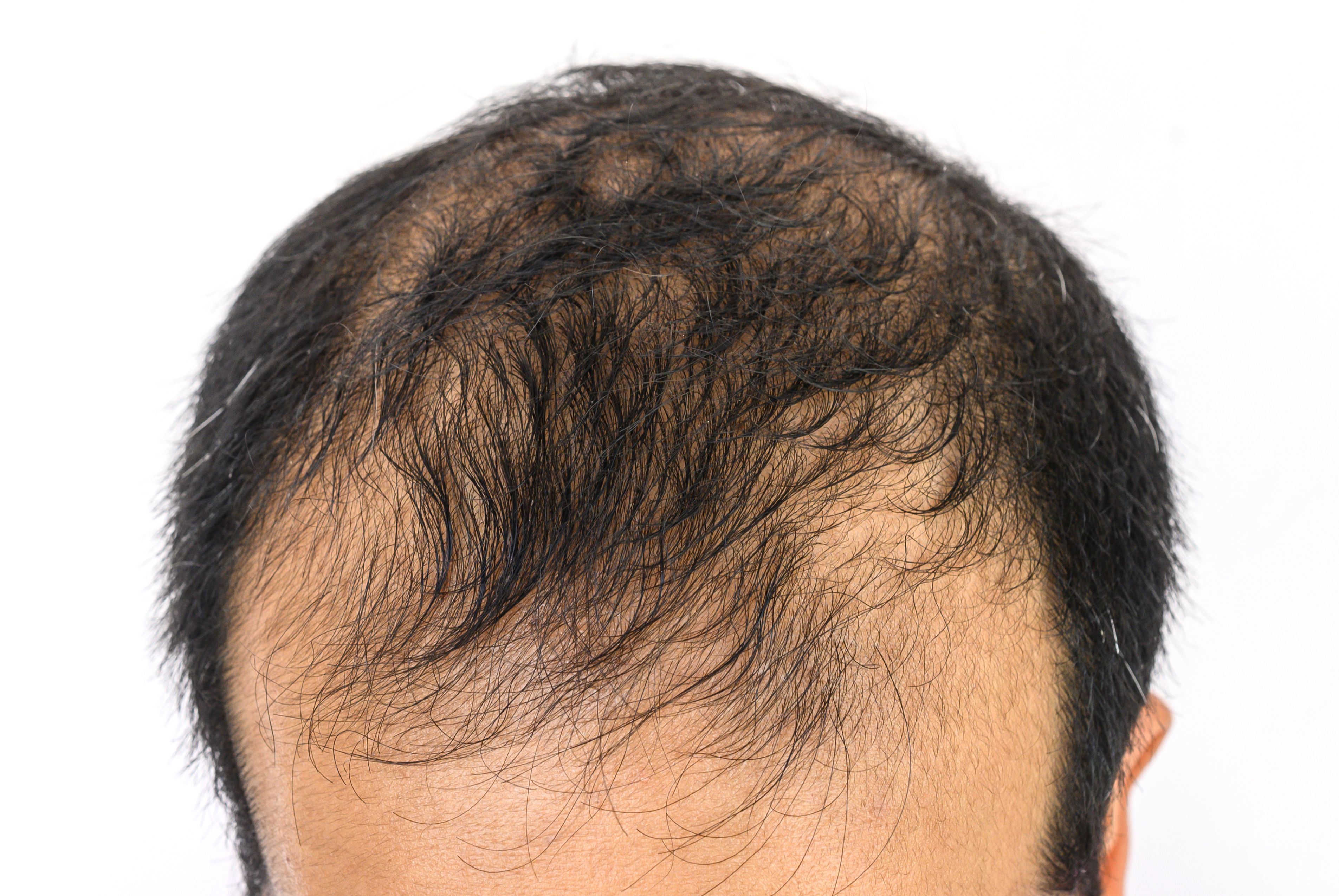- Center on Health Equity & Access
- Clinical
- Health Care Cost
- Health Care Delivery
- Insurance
- Policy
- Technology
- Value-Based Care
Treatment Targeting CXCL12 Protein Offers Hope for Patients With AGA, AA
Antibodies targeting the CXCL12 protein show potential to promote hair growth in conditions like androgenic alopecia (AGA) and alopecia areata (AA), offering hope for new treatment options.
Male pattern baldness. | Image Credit: boyloso - stock.adobe.com

CXCL12 antibody therapy holds the potential to be an effective treatment for patients with androgenic alopecia (AGA) and alopecia areata (AA), according to findings published in the International Journal of Molecular Sciences.
Data collection stemmed from 3 independent experiments to determine whether a CXCL12-neutralizing antibody (aCXCL12) was effective in AGA and AA.
There are limited treatment options available for patients with AGA and AA. Finasteride, one existing treatment for AGA, works by blocking the 5-α reductase enzyme in the scalp. A more recent approach for AA utilizes Janus kinase inhibitors, which effectively suppress the inflammatory response that damages hair follicles (HFs).
Individual HFs from the New Hair Institute in the Republic of Korea were analyzed. Dermal papilla cells (DPCs) were microdissected from the HFs using a stereomicroscope.
Once the remaining epithelium-derived tissue was removed, the DP was attached to a 35-mm culture dish. For 10 days the DPs were cultured in DPC growth medium with 1% antibiotic-antimycotic, without any disturbances.
Dermal fibroblasts were cultured in a medium with 10% fetal bovine serum and stayed in a humidified incubator at 37 °C with 5% carbon dioxide.
To compare hair growth activity, researchers cultured both mouse vibrissae and adult human scalp HFs using established isolation and culture techniques. Normal anagen phase follicles were obtained from the upper lip region of mice and human scalps. The hair growth of both groups was monitored by photographing them at specific intervals (48 to 120 hours) after incubation. Hair length changes were then calculated and averaged (mean ± SE) for groups of 8-10 follicles.
Researchers investigated the effects of dihydrotestosterone (DHT) and testosterone propionate (TP) on CXCL12 production in human DFs. When DFs were exposed to increasing concentrations of DHT or TP, they produced significantly more CXCL12 mRNA and protein. This suggests that androgens stimulate CXCL12 production. Further experiments using CRISPR/Cas9 to knock out androgen receptors in DFs confirmed this link. These findings show that androgens directly induce CXCL12 expression in DFs.
To elucidate the mechanism by which CXCL12 signaling contributes to hair loss, researchers further investigated the influence of recombinant human CXCL12 (rCXCL12) on the expression of androgen receptor (AR) and its cognate receptor CXCR4 in DPCs. Human DPCs treated with graded concentrations of rCXCL12 (3 and 10 ng/mL) exhibited a significant upregulation of androgen receptor, CXCR4 mRNA, and protein levels compared with control mice.
This finding was corroborated by independent experiments where human scalp HFs were cultured with conditioned medium from DFs. Notably, conditioned medium from DFs treated with DHT and TP significantly reduced human HF growth (P < .05; n = 10) compared with control medium. These results collectively suggest that CXCL12 secreted by DFs plays a critical role in androgen-mediated hair miniaturization.
New treatment options for patients struggling with hair loss caused by AGA and AA may involve CXCL12 antibody therapy as a necessary alternative to the limited treatments currently available, according to the authors.
Reference
Zheng M, Kim MH, Park SG, Kim WS, Oh SH, Sung JH. CXCL12 neutralizing antibody promotes hair growth in androgenic alopecia and alopecia areata. Int. J. Mol. Sci. 2024; 25(3):1705. doi:10.3390/ijms25031705
The Breakdown: Breast Cancer Research Awareness Day
August 19th 2025Breast cancer is the second most common cancer among women and the second leading cause of cancer-related deaths among women in the US. In light of Breast Cancer Research Awareness Day, The American Journal of Managed Care® breaks down the most recent advancements in breast cancer prevention, screening, and therapies.
Listen
